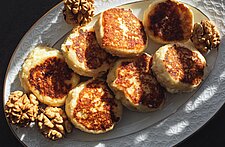Mezcal is a distilled drink made from the maguey plant. The name, mezcal, is taken from the Nahuatl word, mexcalmetl, and is the generic name for spirits originating from the agave plant and also the name of the regional beverage produced mostly in the State of Oaxaca, which is located in the southern part of Mexico. Mezcal is also native to the states of Michoacan, Guerrero, Durango, San Luis Potosi, Guanajuato, Tamaulipas and Zacatecas. Oaxaca, however, is the official home of mezcal and accounts about 60% of national production. Mezcal is also spelled as mescal but the latter is not frequently used because of its association with mescaline, which is popular among drug users. Mezcal is not hallucinogenic.
Whereas tequila is produced solely from the blue agave, mezcal can be made from numerous types of maguey (agave). These include tobala, espadin, largo, silvestre, pasmo, azul and tepestate, among others. Approximately 90% of mezcal is made from agave espadin (angustufolia), although one of the rarest is from agave tobala, which only grows in the highest altitudes. The drink has numerous characteristics and variations. These range from expensive mezcal, which is smooth, amber in color and aged in oak barrels to the more traditional “blanco” or unaged mezcal. Regardless, similar to production of wines and cheeses in other countries, mezcal is protected as an “Appellation of Origin”. The Official Mexican Standard or Norma Oficial Mexicana (NOM) is a form of protection in the process of certification, verification and monitoring of mezcal. Although it is currently not as popular as tequila, mezcal is exported, mainly to the United States and Japan.
Another type of mezcal is known as “pechuga” or “breast”. This process involves the addition of fruit; usually before a third distillation or during the second distillations with the addition of chicken or turkey breast hanging inside the apparatus (alambique), dangling above the mixture. This gives the texture and creaminess to the mouthfeel of the mezcal.

As with tequila and pulque, mezcal is made from the pina, which is the heart of the agave plant. The plant is a member of the Agavaceae family and contains more than 120 subspecies. When the plant matures, usually in about seven-fifteen years depending on the varietal, it forms the pina in the plant’s center, where the juice is extracted and converted into mezcal. It is traditionally made by small-scale producers with some using the same techniques that were used more than 200 years ago. Larger producers use modern methods of production and produce blends known as cremas. Mezcal can vary to a wide degree, depending on the type of agave used and whether or not other ingredients such as fruit and herbs are added during the fermentation process.
There are two varieties of mezcal. One is made of 100% agave while the other is at least 60% with other ingredients added, which is rarely found.
With its complexity and wide range of varietals and methods, and of course due to the popularity of its brother tequila, mezcal has made the cross over from being drank neat, to being mixed in cocktails. With its rising popularity in the cocktail scene mezcalerias (establishments that only serve mezcal and mezcal based cocktails) are cropping up more and more.
Check out last month's Monthly Mixology with Junior Merino HERE





